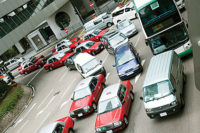Chinese Automotive Coatings Manufacturers Lag Behind Foreign Competitors

DALLAS - According to statistics from the China Association of Automobile Manufacturers, China’s automobile production volume and sales volume in 2011 was 18.4189 million units and 18.5051 million units respectively, increasing by 0.84 percent and 2.45 percent. The demand volume of automotive coatings reached 590,000 tons. In 2012, annual automobile production volume was 19.2718 million units, with year-on-year growth of 4.6 percent. Sales volume was 19.3064 million units, with year-on-year growth of 4.3 percent, and the demand volume of automotive coatings reached 620,000 tons. This and other information is available in Research and Development Prospect of China’s Automotive Coatings Industry, 2013-2017, a new report being offered by ReportsnReports.com.
At present, foreign-funded enterprises account for more than a half of total market share. With advantages in capital, technology and scale, these companies occupy most of the market in medium- and large-scale cities. In OEM coatings, foreign-funded brands occupy 80-85 percent of the total market share. The largest automotive coatings manufacturers, such as PPG, DuPont, Kansai and Dai Nippon and BASF, are optimistic about demand for automotive coatings in China and are entering the market.
In 2009, China’s total coatings output ranked first in the world, and China has become a significant producer and consumer of coatings. However, automotive coatings from Chinese manufacturers still lag behind in quality and variety. Problems in the industry include inadequate innovation, backward production control technology, and a low level of equipment. Domestic companies still occupy only a small market share, and larger competitors make the market more difficult, narrowing profit margins for domestic enterprises. For quite some time, the average profit margin in this industry was lower than 10 percent. In the developed countries, domestic automotive coatings usually account for more than 20 percent of the total coatings output, but this proportion in China was is only about 8 percent, making room for future development.
Looking for a reprint of this article?
From high-res PDFs to custom plaques, order your copy today!





